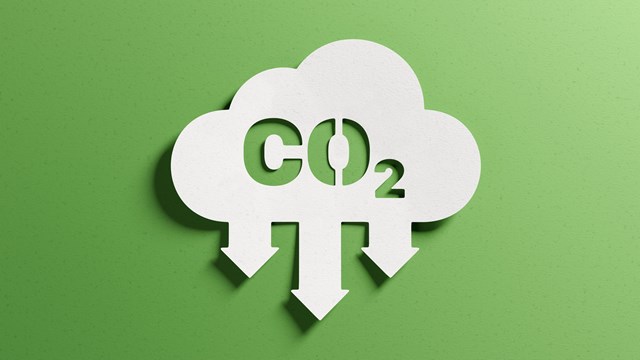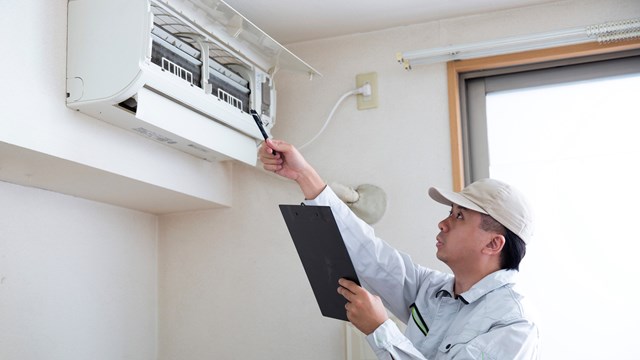In his 1971 book Future Shock, author Alvin Toffler describes a society undergoing enormous structural change as a result of technological advancements—and the social stress and disorientation that came with that change. A half-century later, thanks to both ever-accelerating tech and the deepening climate crisis, we’re experiencing an era eerily reflective of what Toffler described. And while world leaders may be dithering in their response to the warming planet, the same can’t be said of the real estate industry. Developers, owners, architects, and designers are stepping up to provide answers and to stabilize our housing future. They are futurizing both our new and existing buildings to confront the effects of global warming on our lives.
Form Follows Function
The mantra of modern architecture and design can be summed up in three words: form follows function. The idea, coined in 1896 by Louis Sullivan, dictated that a building’s form should follow its intended use. Today, this concept can be applied to adapting residential buildings to the stresses of climate change. A building’s form should follow the environmental stresses to which it will be subjected.
“The issue of climate change has impacted almost every aspect of our lives,” says Antonio Argibay, managing principal at Meridian Design Associates, an international architecture and design firm based in New York. “This guiding principle includes buildings, which contribute to nearly 40% of carbon emissions [globally]. To combat this high level of carbon-contributing materials to the environment, architects and developers are striving towards achieving net-zero or negative-zero carbon emissions within the next decade. Energy efficiency plays a crucial role in this endeavor, with significant advancements made in building envelope design, LED lighting, and HVAC systems. In terms of building materials, sustainable wood, recycled materials, and green roofing are among the most noteworthy options. Green roofing not only facilitates stormwater runoff and provides habitats for wildlife, but also helps reduce the heat island effect. Additionally, low-impact insulation, such as cellulose insulation, plays a vital role in carbon sequestration and energy conservation.”
“We are seeing all of the predicted effects of climate change today,” says Giulia Alimonti, vice president of Entuitive, a Canadian architectural and design firm with offices in New York. “We must control more than just the temperature. There is an important and urgent need for buildings to be designed to keep out heat, cold, and smoke. Witness the severe smoke conditions we experienced this past June and July due to climate change-induced wildfires in northern Canada spreading over the American midwest and northeast. Smoke must not infiltrate into interior space. It’s important to design and build airtight building envelopes and interior filtration systems so pollutants remain outside. There is a big emphasis now on performance and energy, thermo-performance, and filtration in new construction. Practical examples of how we are adapting to this are in quality control and inspections made during the construction period. Inspectors from the design team make sure air and water barriers are installed properly. There is also extra emphasis in designing building systems correctly to begin with.”
Changes Large & Small
Architectural and design innovations reflecting the effects of climate change come in all sizes, shapes, and colors. They may be as small as changing the type of light bulbs used in our hallways to adding auxiliary, clean power sources like solar panels to our roofs. They also involve unexpected items such as live plants, which help control both interior and exterior environments.
“The integration of solar panels as a renewable energy source is gaining popularity,” notes Argibay. “Personally, I believe we should explore the potential of small wind turbines further. Water efficiency is now a vital aspect of sustainability, as it directly affects operating costs and market appeal. Innovations on the horizon include the construction of multistory buildings made entirely of wood, which acts as a carbon sink. The 25-story Ascent Tower in Milwaukee is an excellent example of this approach. Utilizing local and recycled materials is another crucial step towards carbon control.
“However,” he continues, “I believe the most significant aesthetic change in this movement is the introduction of urban gardening and agriculture, as well as the incorporation of green spaces on rooftops. The attention to biophilic details and the use of interior green walls adds a unique and refreshing twist to the urban landscape of the future.”
“Buildings are designed today with more awareness of the natural environment,” adds Alimonti. “As architects and designers, we are making sure apartment layout, window size, and positioning relative to the sun are considered in our plans. You must take advantage of natural light to avoid additional heating and cooling costs. We want windows set into the exterior wall. We need natural light, but we also need shading. Additionally, there is a big emphasis today on materials that use less carbon in fabrication and that don’t negatively affect residents. No fiberglass insulation, for instance, and no more spray foam. Ideally we line up a new building north to south, so as not to have too many windows on the south side. But in some intensely built-up locations—like New York City, for instance—that may not be possible. We have to position the building by the existing grid.”
Argibay adds that “the technological advances in window and glass technology are noteworthy, as they allow for better control of natural light while reducing heat gain. Additionally, the increasing prevalence of smart building management systems that utilize AI to learn occupants’ behaviors and optimize performance accordingly is worth mentioning.”
Another fascinating advancement is in the area of insulation. “In terms of insulation,” says Alimonti, “there’s a big push to use low-CO2 materials. Spray foam insulation used with a blowing agent is really bad for the environment, so we’ve moved away from it, and use a product called mineral wool that’s actually made from stone. It doesn’t become moldy, it isn’t flammable, and it doesn’t release any kind of detrimental gas into the atmosphere. This trend is also prevalent with roofing materials.”
Where Is the Trend Going?
The reality of climate change is everywhere around us and architects and designers are making a concerted effort to battle it.
Argibay gives a preview of how these trends might further evolve, giving insight into what multifamily buildings and HOAs might look like in the near future. “Deep decarbonization, the focus on carbon emissions, will intensify,” he says. ”Smart buildings will network whole neighborhoods. Coastal areas that continue to be a big draw for residential building design will have to be adapted to rising sea levels and extreme weather events. There will be a growing interest in renewable materials and circular economy goals for construction, including prefabrication. How buildings interact with transportation by providing EV charging stations, bike storage and pedestrian priority in access. My favorite trend is a strong emphasis on wellness, through access to natural light, fitness, and biophilic initiatives.”
According to Alimonti, “Current trends will continue to evolve at an even faster pace going forward as people are seeing the effects of global warming increase at a more rapid pace now. They woke up when they couldn’t breathe and the skies turned orange. In older, occupied building systems they will need to figure out how to retrofit their properties to withstand the upcoming requirements to reach a carbon-zero world.”
Urgent as the climate situation is, carbon reduction initiatives targeting multifamily residential buildings have not been met with universal enthusiasm. Some boards, as well as attorneys and managers, have chafed at the many and various laws being enacted nationally to combat climate change—many of which require extensive, expensive retrofitting of existing properties. In fact, some have even advised their clients to pay the fines associated with noncompliance rather than do the necessary work to meet new standards.
However, says Alimonti, “not doing the work and paying the fine is a terrible idea. It’s not a one-time fine; for the life of the building, they will have to continue to pay the fine instead of [using those funds for] fixing their problems. And the fines will compound, making the building less appealing to new buyers.”
Climate change is a real and dangerous reality. But there are ways to battle it and prepare for its effects. Architects and designers are the vanguard fighting that battle today.
A J Sidransky is a staff writer/reporter for New England Condominium, and a published novelist. He may be reached at alan@yrinc.com.







Leave a Comment